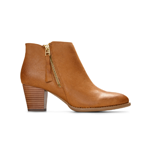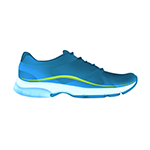
What to Look for in the Perfect Winter Boot
By Dr. Jackie Sutera
Out of all the footwear, boots probably provide the most support. However, because there are several different types of boots, we shouldn’t expect them to all feel the same. How we wear chelsea boots differs from how we wear combat boots . Hiking boots should fit differently from orthotic boots or PAC boots. So, knowing there are this many types, how do you choose which boot style is best for you?
What are the best type of boots you can buy as far as comfort and foot health are concerned?
Although there are different types of winter boots, remember that the higher the heel, the more potential there is for pinching in the forefoot because heels shift your weight forward toward the toes. Materials like waterproof leather, and faux fur lining can be more difficult to break in, while suede and natural leathers tend to “give” easier. That’s because, unlike a rain boot, the winter boot is more meant for extra warmth and comfort in cold weather. The best winter boots, though, not only provide those experiences but also make it easier to walk on slippery, iced surfaces (like insulated winter boots).
The ideal winter shoe should always be snug but never tight, especially throughout the long winter months. As a podiatrist, I recommend boots (or any winter footwear) with midsole support to give more support to the arch, and they should also have a sturdy thick sole with a slight heel. Avoid any that are flat and thin. These features will provide more ankle stability which can prevent sprains. Breathable, waterproof material is a great feature, so they can also protect your feet from weather, water, snow, etc..
If you’ve purchased a pair of boots and found that they hurt your feet, what can you do to make them more comfortable?
Breaking in shoes refers to wearing new shoes, which are often times a bit tight or stiff the first few times until they soften or “give” a bit, making them more comfortable. This occurs usually even through some potential discomfort, in hopes that they loosen and soften up. Most shoes are a bit snug when you first put them on, especially boots. Boots are commonly made with leathers that can be also weather treated causing them to be a bit tight or stiff at first. There is no great way to tell boots that will need this or not just by looking at them but you can get a pretty good idea by trying them on. Once you become familiar with a brand, style and the materials you can sometimes make a better more educated guess.
I discourage people from using their feet and walking around in pain, to break in shoes initially. First off, if a shoe is too tight or narrow, strongly consider choosing a different pair to purchase. Wearing shoes to break them in can cause: blisters, ingrown nails, pinch nerves/neuromas, and worsening of corns, hammertoes and bunions. To soften and loosen boots try using a shoe leather softening product, specially designed for this. Also, using shoe trees or having them professionally stretched by a shoemaker are great ways to soften the snow boot and break them in, making them more comfortable while sparing your feet!
Any other tips for comfortably wearing boots this fall?
Whether it’s ankle boots, hiking boots, chelsea boots, or rain boots, try to choose shoes whose shape matches the shape of your foot. For example, if you have a square, wide foot or have bunions or hammertoes, avoid narrow, pointy-toe boxes and instead opt for a rounder or square toe box. Switch it up; don’t choose the same style in a few different colors. Instead, have a few different styles. Feet love variety.
About the Author:
Dr. Jacqueline Sutera is a surgically trained doctor of podiatric medicine specializing in the prevention and treatment of foot pathology. She graduated from Fordham University with a Bachelor of Science degree in Biology and Philosophy. She later attended the New York College of Podiatric Medicine where she earned the degree of Doctor of Podiatric Medicine (DPM). Dr. Sutera received her postgraduate residency training at the busy level-one trauma center at Jamaica Hospital in Queens, NY and Brookdale Hospital in Brooklyn, NY. During her time there, she served as chief surgical resident and received and completed training in all aspects of podiatric medicine and surgery. Dr. Sutera is Board Certified in Foot Surgery and is a Fellow of the American College of Foot & Ankle Surgeons. She is also a proud member and spokesperson for the American Podiatric Medical Association and the New York State Podiatric Medical Society. As one of NYC’s premier podiatric physicians, she is a caring, conscientious and extremely personable doctor who prides herself on being holistic in her approach to foot care. Where other doctors treat feet only locally, she has a unique gift of being able to link some foot problems to other underlying conditions taking place in the body.









